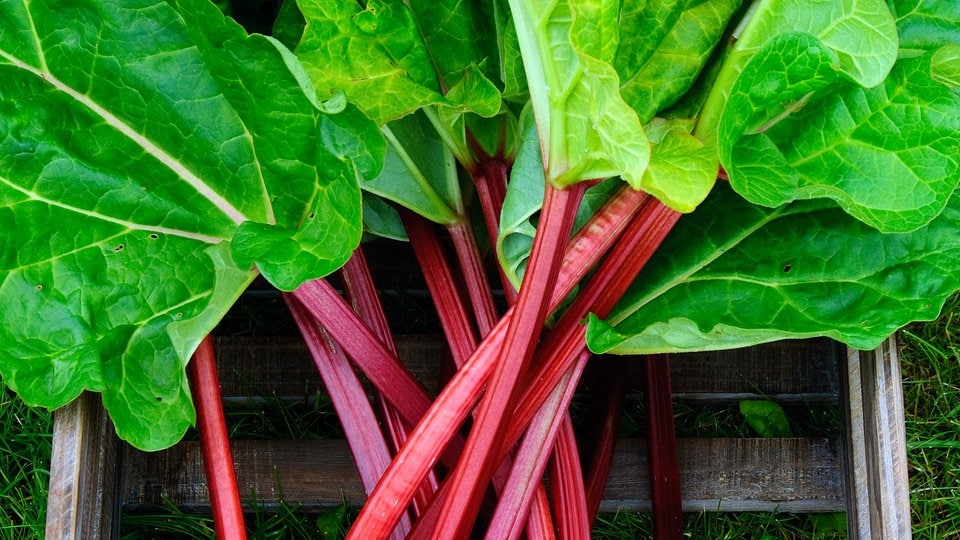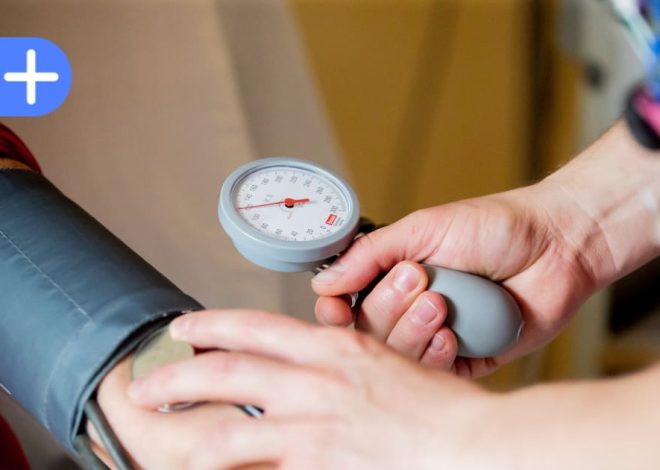
Growing, caring for and harvesting rhubarb
Even though rhubarb is used like fruit in desserts, it is a perennial vegetable from the knotweed family. Here you will find information about the plant, tips for growing and caring for it, and simple recipes on how to use the sour stems.
Rhubarb is one of the most popular plants in the kitchen garden. Rhubarb is extremely uncomplicated and, unlike many vegetables that are annuals, is a permanent crop. The hardy perennial is planted once and can remain in the same location for around eight years. The yield increases from year to year.
Image rights: IMAGO / imagebroker/schreiter
Plant rhubarb
Rhubarb’s natural habitat is in humus- and nutrient-rich soils. It should grow in the garden in a sunny to partially shaded location that is always slightly moist. If the location is too shady, the stems remain very thin. The location in the garden should be chosen with foresight, as the plant lives up to eight years. It gets bigger and bigger over the years. The rhubarb needs at least one square meter of bed space, and probably more. Ideally it is planted in autumn or early spring. But even if rhubarb is planted later, the plant will cope with it without any problems.
Plant rhubarb* Dig the soil deeply
* Thoroughly remove root weeds
* Incorporate plenty of leaf humus into sandy soils so that the soil can store water better
* Water freshly planted perennials thoroughly
* Work compost into the soil around the plant, which can also be enriched with a handful of horn shavings
Boost rhubarb
As soon as the first tender rhubarb shoots appear in spring, they can be supported in sprouting. To do this, cover the plant with a bucket, a wicker basket or a large clay pot. The principle is quickly explained: the spring sun warms the air and the ground beneath the cover. This means the rhubarb sprouts much faster. The lack of light doesn’t bother him. The darkness even ensures that the stems have a particularly delicate aroma. With this method, the rhubarb is ready to harvest just four weeks after covering.
Care for rhubarb properly
Rhubarb needs sufficient nutrients and water in May and June. At this point it grows and forms the rhubarb stalks. To ensure that the soil remains fertile, the plant is fertilized with compost and horn shavings in March. After the harvest, organic fertilizer can be added to the soil again.
To ensure that the rhubarb stalks grow strong, the location should never dry out – so don’t forget to water in dry times. As soon as flowers appear, the rhubarb stalks are harvested by breaking them out. The plant’s dormant phase begins in October: the leaves turn yellow and shrink. No care or winter protection is necessary as rhubarb is extremely hardy.
Image rights: colourbox.com
Harvest time for rhubarb
Rhubarb is traditionally only harvested until June 21st. The strongest rods should be pulled out. Never cut off rhubarb, otherwise the rest of the rootstock will rot. At least half of the stalks should also be left standing, otherwise there will be a lack of leaves for photosynthesis. The energy reserves for the next year are created via the leaves. Once harvested, rhubarb loses water quickly, so it should be processed as fresh as possible.
But it also keeps in the fridge for a few days. Freezing is also a real recommendation: either as a compote or raw and chopped. Rhubarb can also be used as a cake topping or other delicacies in winter. After harvesting, the stalks are washed with cold water. They don’t necessarily have to be peeled and can be processed straight away.
Remove rhubarb blossoms
Rhubarb is a knotweed plant that not only produces edible stems, but also impressive flowers – after all, it wants to reproduce and attract bumblebees and bees. The plant puts all of its energy into the flower. However, the growth of the rhubarb stalks falls by the wayside.
So if you want to harvest plenty of rhubarb, you should remove the flowers quickly. It is edible and can be enjoyed steamed, for example, as a spicy, slightly sour vegetable side dish. So if you forego harvesting the rhubarb stalks and simply let the perennial grow, you can enjoy its exotic-looking seed heads.
Image rights: MDR/Dörthe Gromes
When does rhubarb bloom?If the rhubarb plant has been exposed to temperatures below 10 degrees Celsius for three to four months, it will produce flowers. In order for the leaf stalks to develop, the flower buds should be broken out in April, or at the latest in May.
Propagate rhubarb
If the plant begins to become bare in the middle, rhubarb should be divided and relocated. This happens after about six to eight years. A favorable time for division is October. The plant can be divided with a spade. Each section of the strong root should be around ten to fifteen centimeters long. Because rhubarb spreads so much, a divided and replanted plant should be at least one meter away from the next plant. Only the shoot buds should still be visible from the soil after planting. When dividing in autumn, the rhubarb pieces can also be piled up with a little protective soil.
Pests and diseases
Rhubarb is considered to be very robust. It is also largely avoided by snails and voles. Occasionally the perennial has to contend with various leaf spot fungi – especially in warm, humid years. You should remove affected leaves early. Please do not throw it in the compost. They belong in the household waste.
Ingredients of rhubarb – be careful with oxalic acid
The acids and minerals in rhubarb have a detoxifying and blood-purifying effect. The Chinese already knew this more than 2,500 years ago. But beware! Sour doesn’t always make you funny. People who are prone to rheumatism, gout and arthritis or who have a sensitive stomach should either avoid rhubarb entirely or only consume small amounts. When preparing with milk, please consider: The milk renders the oxalic acid harmless. However, the calcium contained in milk forms a compound with oxalic acid – and is therefore no longer available to the human body.
How dangerous is the oxalic acid it contains?The oxalic acid content is very low and is further reduced through the cooking process. For oxalic acid to have a noticeable effect, a person weighing 60 kilograms would have to eat 36 kilograms of fresh rhubarb. The flowers have no influence on the oxalic acid content of the plant. Even when it flowers, it is safe to eat.
Process rhubarb
Since rhubarb loses water quickly once harvested, it should be processed as fresh as possible. But it also keeps in the fridge for a few days. After harvesting, the stalks are washed with cold water. They don’t necessarily have to be peeled and can be processed straight away.
Image rights: Colourbox.de
| Hometown | Russia |
| Plant family | Knotweed family |
| growth | clumpy, large umbrella-like leaves |
| blossom | The inflorescence grows to a height of over two meters. If you want to harvest stems, you should remove them. |
| flowering time | April May |
| fruit | Rhubarb sticks |
| Location | sunny to partially shaded |
| Floor | humus, nutrient-rich soil; sandy soils should be enriched with humus |
| Hardy | Yes |
| Perennial | Yes |
| lifespan | eight to ten years, after which growth and yield decline |
| particularities | is a vegetable and not, as is often assumed, a type of fruit |
More about rhubarb
Rhubarb recipes
This topic in the program:MDR TELEVISION | MDR Garden | May 15, 2022 | 8:30 a.m

Ethel Purdy – Medical Blogger & Pharmacist
Bridging the world of wellness and science, Ethel Purdy is a professional voice in healthcare with a passion for sharing knowledge. At 36, she stands at the confluence of medical expertise and the written word, holding a pharmacy degree acquired under the rigorous education systems of Germany and Estonia.
Her pursuit of medicine was fueled by a desire to understand the intricacies of human health and to contribute to the community’s understanding of it. Transitioning seamlessly into the realm of blogging, Ethel has found a platform to demystify complex medical concepts for the everyday reader.
Ethel’s commitment to the world of medicine extends beyond her professional life into a personal commitment to health and wellness. Her hobbies reflect this dedication, often involving research on the latest medical advances, participating in wellness communities, and exploring the vast and varied dimensions of health.
Join Ethel as she distills her pharmaceutical knowledge into accessible wisdom, fostering an environment where science meets lifestyle and everyone is invited to learn. Whether you’re looking for insights into the latest health trends or trustworthy medical advice, Ethel’s blog is your gateway to the nexus of healthcare and daily living.


